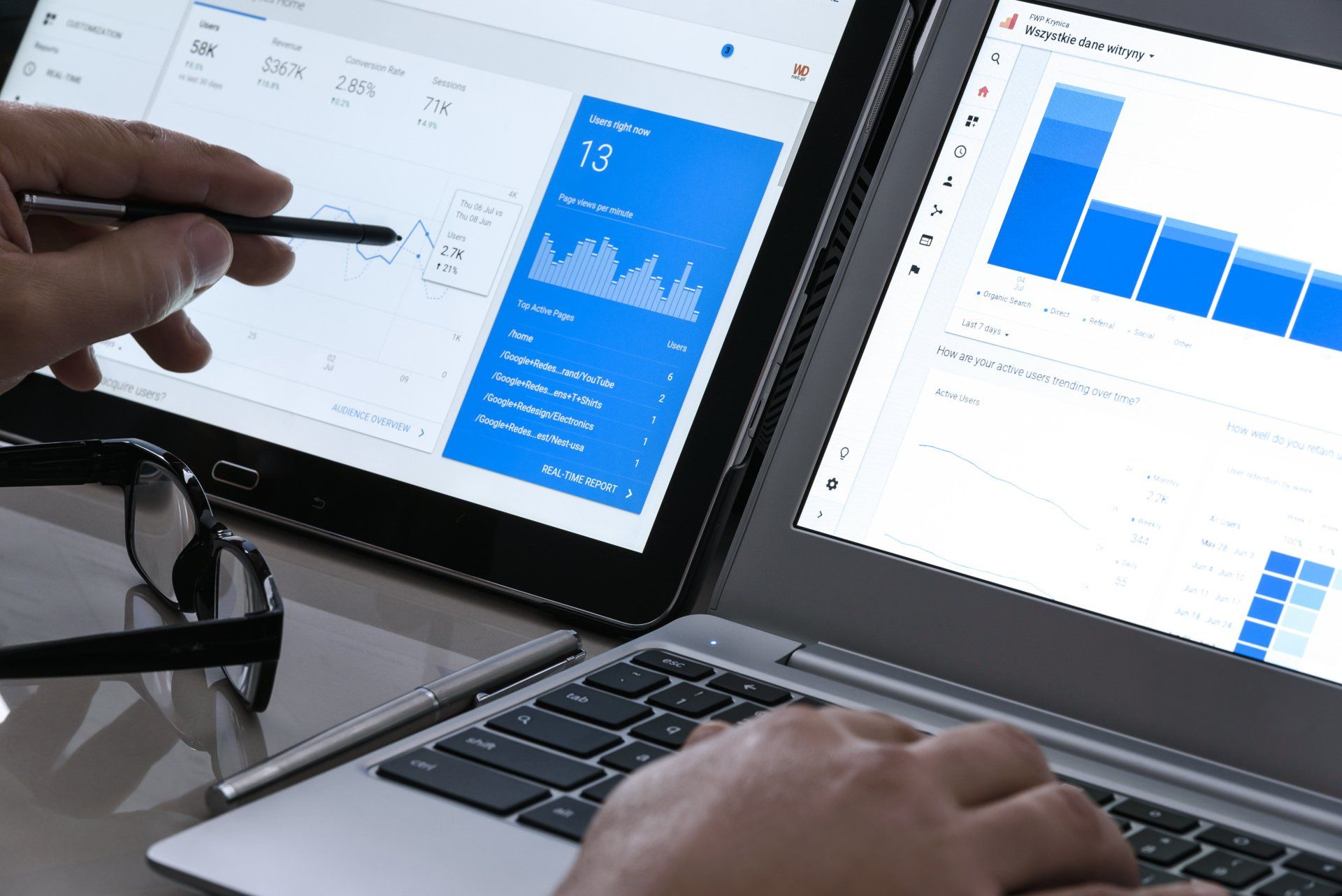5 Things That You Didn’t Know You Could Do With Google Analytics
This blog post was written by:
Liz Fraser • December 10, 2020
Did you think Google Analytics was just about reporting the number of page views on your website? Then we are about to blow your mind!

Recently, I have had a few calls with clients where I have helped them to make the most out of the data
they have available. During these calls, I realised that many people have no idea about the depth of data they have at their fingertips!
Google Analytics contains a LOT of data. More than most people can reasonably make sense of. To make it simple for you, here are just five key things it can do which are easy to digest and make use of, without having to trawl through pages or reports:
1. Custom Alerts
These are not real time - they generally take about 24 hours to come through. However, once set up, you don’t have to think about them again until you receive the alert. The trick is getting them set at the right level so you are not inundated. A particularly useful scenario is for identifying problems; you can be alerted when something is NOT working as it should. Then, you don’t have to think about it again unless it happens, but you have the security of knowing that it won’t slip past unnoticed.
Alerts can be set on a variety of triggers. Here are some examples that I like to use them for, and the actions I would take as a result of receiving the alert:
- 404 / Page Not Found: A trigger on a view of your 404 page. This prompts further investigation within Google Analytics to discover what the visitor was trying to find. Sometimes it is a typo or nothing to worry about, but sometimes it will identify a broken link that needs fixing, a redirect that can be put in place, or the need for new content to fill a gap that people are looking for.
- Suspicious activity: A trigger on more than a certain number of pages or longer than expected session duration. This can sometimes indicate an unidentified bot or suspicious activity on the site. If it is frequent and using up bandwidth it may require action, but often it is simply a matter of being aware and potentially excluding it from reporting if it skews figures from which you are making decisions. Otherwise, it may be a highly valuable potential client who you may want to reach out to!
- Bounce rate: A trigger above (or below) a certain tolerance. This can identify potential site issues but also campaign issues - if a campaign is resulting in a very high bounce rate then it may need tailoring or refining, and the sooner you can act the more money you will save!
2. Custom Segments
Defined very easily within the GA interface, there are almost endless opportunities here. Here are just a few examples of how they can be used:
- Eliminate the noise to find out how people really use your site - looking only at those who see more than ‘x’ pages / spend more than ‘x’ time.
- Identify ‘hot prospects’; users who take a certain action. You can then see what else they do on the site, which will help to help identify more of them, earlier.
- Geographic focus - We have several clients who like to focus on the UK only, or perhaps just analyse audiences on a regional level if some markets are more mature than others.
- Identify fallout - Users who perform action 1 but NOT action 2, for example: ‘Add to Cart’ but not ‘Purchase’.
- Remove customers - For example, those logging into a member area or viewing customer-only content you may not want considered as prospects.
- Remove test traffic
3. Schedule Reports
Do you spend time creating reports, or trying to remember where you found certain information last time? Or, perhaps more commonly, completely forgetting to look at your stats for months at a time because you are too busy?
Get the relevant things you need (a manageable, digestible amount) into your inbox on a regular basis. Consistency and frequency, to meet your needs!
4. Integrate with Google Sheets, Data Studio etc.
Do you often need to get data from GA but it’s never in the right format, or it needs combining with other information? Don’t spend time looking for and copying data - not only is that a time drain but there is a huge potential for human error!
With a FREE plugin, you can set up and run Google Analytics directly into Google Sheets, and manipulate it however you want. Then, when you need to update next time, you just hit ‘Run Report’. Google Data Studio is also a great option for this, depending on what you want to do with the data.
5. Custom Event Tracking
There are so many options here that it could definitely be a topic of its own. However, to give you just a few ideas, you can implement:
- Scroll tracking - Do users scroll far enough down a page to see certain content?
- External link tracking - Perhaps a key event for you is downloading a PDF, or linking out to a third-party retailer or donation site. This won’t be covered by GA by default - but it can be!
- Do you have multiple links to the same content and want to know which one works best? Track them individually and compare!
All this can be a bit overwhelming, but it is worth knowing what is available! If you are not sure where to start or want to know how to implement any of the above, then just book a call with us
and ask.



